Get PeakVisor App
Sign In
Search by GPS coordinates
- Latitude
- ° ' ''
- Longitude
- ° ' ''
- Units of Length

Yes
Cancel
Share ×

Scan the QR code and open PeakVisor on your phone
❤ Wishlist ×
Choose
Delete
Escape London for the day and discover some of the finest woodlands in England at the Chiltern Hills Area of Outstanding Natural Beauty (AONB). There are 129 named hills in Chiltern Hills AONB. The highest and the most prominent hill is Haddington Hill (284 m/931 ft).
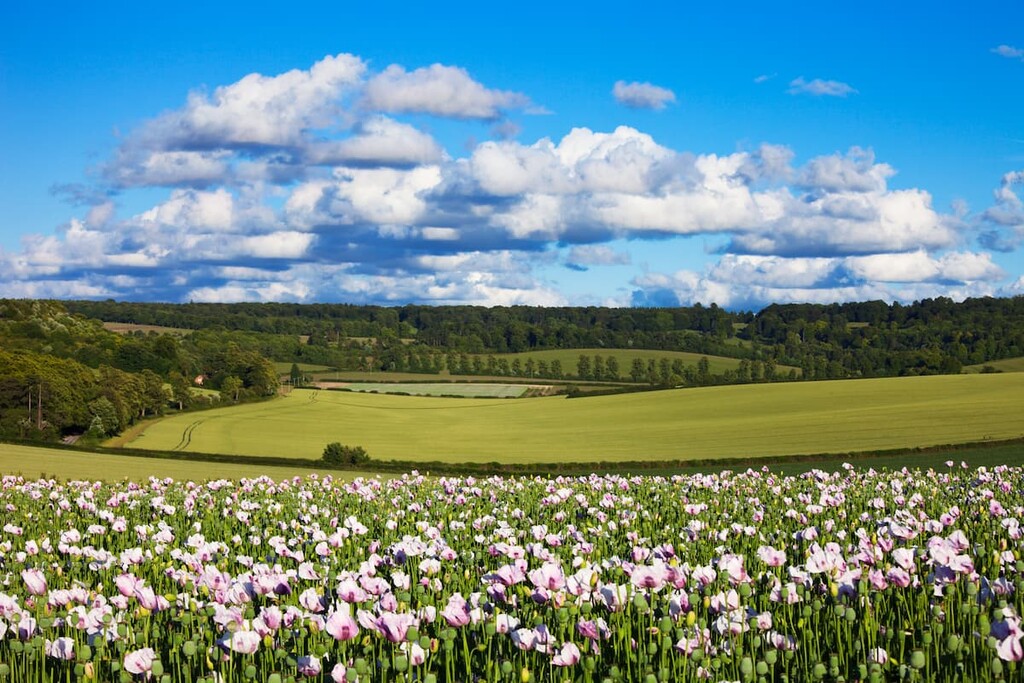
The Chiltern Hills AONB is one of 46 Areas of Outstanding Natural Beauty in the United Kingdom. Designated an AONB in 1966, the area covers 324 square miles (839 sq. km) of woodlands and hills, running from Hitchin in Hertfordshire down to the River Thames in southern Oxfordshire. The National Trust manages the Chiltern Hills AONB.
The Chiltern Hills AONB covers approximately half of the Chilterns, a chalk escarpment that's 45 miles (72 km) long and 12 miles (19 km) wide. The Chiltern Hills stretch through four counties: Bedfordshire, Buckinghamshire, Hertfordshire, and Oxfordshire.
You'll find several other notable regional parks and AONBs near the Chiltern Hills. The North Wessex Downs AONB lies to the southeast of the Chiltern Hills and is connected to the area by a narrow valley known as the Goring Gap.
The Chiltern Hills AONB is also connected to the Colne Valley Regional Park to the south. Other nearby parks include the Cotswolds AONB 50 miles (80 km) west, and the South Downs National Park 60 miles (96 km) south.
One of the most famous features of the Chilterns is its woodlands, which cover approximately a fifth of the park. The woodlands are composed mainly of beech, as well as cherry, ash, and oak. The woods have been a staple of the Chiltern Hills for centuries and are still among England's densest and largest remaining forests.
Of the Chiltern Hills AONB's woods, the most important is its box woodlands. There are only three officially recognized box woodlands in the UK, the largest of which is in the Chilterns near Great Kimble in Buckinghamshire. Boxwood is considered the best timber for engraving due to its high density. As such, it was an integral part of local industry for centuries.
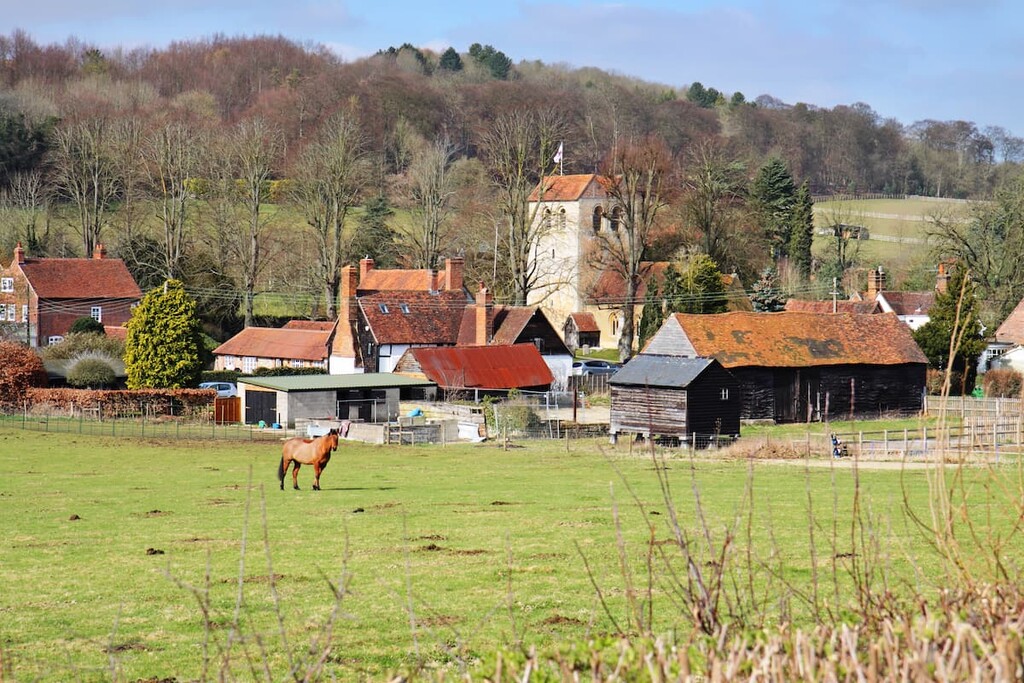
The area's chalk terrain has given rise to rare habitats, including chalk grasslands and chalk streams. There are 2.5 square miles (7 square km) of chalk grasslands in the Chiltern Hills AONB, which is characterized by its short turf and abundant wildlife.
Chalk streams are internationally recognized as rare environments, with all known examples in the UK and Northwest Europe. Approximately 85 percent of all chalk streams are located in England.
Approximately 75% of the Chilterns AONB is farmland. Farms cover the vast majority of the Chilterns and are used for growing crops or raising animals for consumption. There are also 170 commons in the Chilterns AONB, ranging from fields covered in vibrant wildflowers to some of England's thickest woodlands.
The Chiltern Hills AONB is very popular with hikers due to its convenient location. Several major metro areas are within driving distance of the Chilterns, including the national capital London, which is approximately 50 miles (80 km) to the southeast.
The city of Reading sits on the southern boundary of the park. Other nearby cities include Oxford, which is 20 miles (32 km) to the northwest, and Milton Keynes, which is 35 miles (56 km) to the north.
The Chiltern Hills are composed of a chalk escarpment with an overlayer of clay-with-flints. The hills rise gently as a dip slope to the southeast before creating a steep escarpment to the northwest, which overlooks the Vale of Aylesbury.
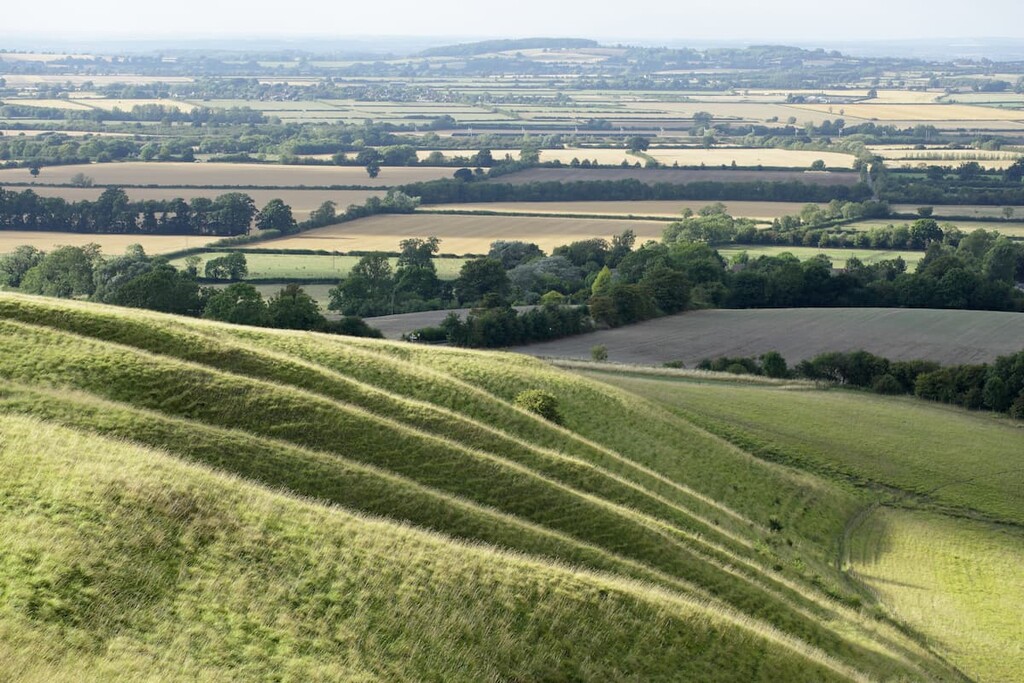
The chalk hills of the Chilterns formed approximately 145 million years ago at the dawn of the Cretaceous period. This soft sedimentary chalk rock formed under shallow subtropical seas before being compressed and lifted by shifting tectonic plates roughly 65 million years ago. Then, erosion and weathering helped shape the chalk into the rolling hills we see today.
The chalk is formed from soft calcareous ooze, which is made from the remains of microscopic plankton. While generally composed of plankton, larger fossils are also found within the chalk, including ammonites, sea sponges, and even shark teeth.
The creation of the Chilterns resulted from the Alpine orogeny, a mountain-building event caused, in part, by the convergence of the Eurasian and African plates. This event created several major European mountain ranges, including the Alps and the Pyrenees. It also helped shape the landscape of southern England, including the North Downs, the South Downs, and the Chiltern Hills.
In the modern-day, the Chiltern Hills are a range of small, undulating hills which don't exceed 300 m (984 ft) above sea level. The highest peak in the Chiltern Hills AONB is Haddington Hill (284 m/931 ft). Other notable peaks include Shirburn Hill (274 m/898 ft), Ivinghoe Beacon (233 m/764 ft), Coombe Hill (268 m/879 ft).
With several rare habitats, including box woodlands, chalk streams, and chalk grasslands, within its borders the Chiltern Hills AONB is home to a variety of unusual fauna and flora.
As one of England's most heavily wooded areas, the Chiltern Hills AONB is an essential habitat for a range of mammals, birds, and insects. Perhaps the most famous resident of the Chilterns is the red kite, a large bird of prey with a 1.5 m (5 ft) wingspan.

Red kites went extinct in England during the nineteenth century but were successfully brought over from Spain and reintroduced to the area between 1989 and 1994. There are now thought to be around 300 breeding red kite pairs in the Chiltern Hills. Other bird species commonly seen in the AONB include blackcaps, woodpeckers, chaffinches, and jays.
The largest wild mammals inhabiting the Chiltern Hills AONB are fallow deer, usually seen in medium-sized herds of around 50. Due to their propensity to eat young tree shoots and their rapidly growing numbers, fallow deer are becoming a nuisance, causing deforestation and traffic accidents.
Muntjac deer, a smaller relative of fallow deer, were first introduced to the area in the 1920s. While also common, muntjacs tend to be more solitary and are less of a threat to local ecosystems.
Other common mammals include grey squirrels, badgers, and red foxes. One of the rarest mammals in the Chilterns is the water vole, which can be found around the area's numerous chalk streams.
While exploring the Chilterns' beechwoods and chalk grasslands, you'll also encounter some of the best examples of British butterflies. Several rare and beautiful species have been found across the Chilterns, like speckled wood butterflies, Adonis blue butterflies, and orange tip butterflies.
The Chiltern Hills' chalk grasslands feature a staggering array of flowers. It's said that over forty flowering species can be found within one square meter of chalk grasslands. Its diversity has led some people to refer to these chalk grasslands as the "tropical rainforests of Europe."
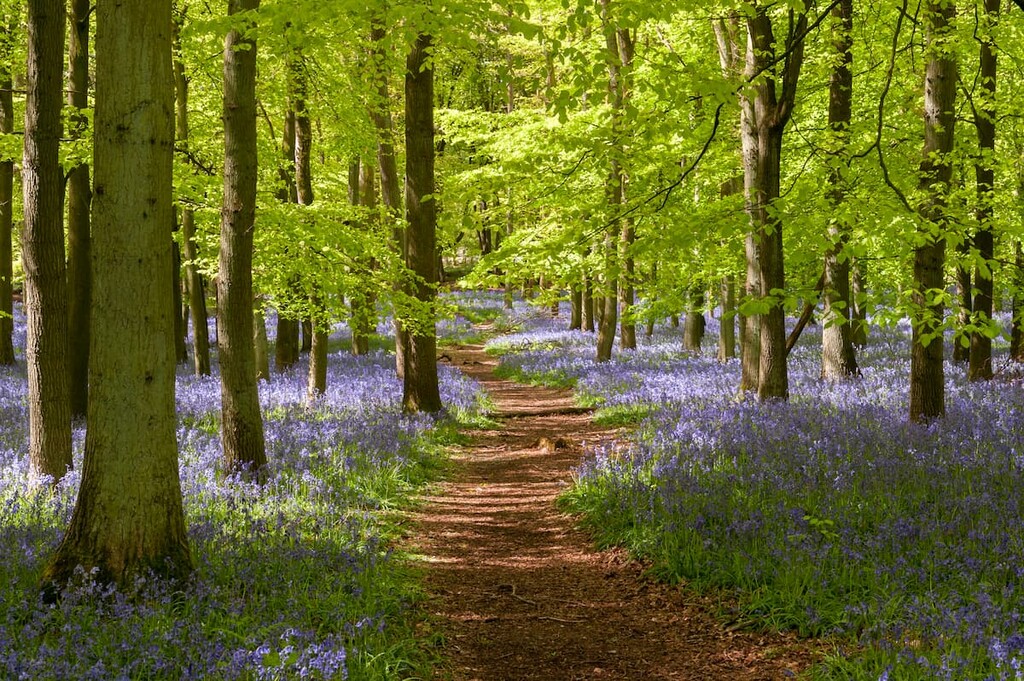
Chalk grasslands are highly unique, as they are often home to several plant species that don't grow anywhere else. One of the most famous examples is the Chiltern gentian, which is among the rarest plants in the country and the county flower of Buckinghamshire.
During spring, you'll see the Chilterns' woodlands transformed into a sea of vibrant bluebells. Cherry blossom trees are also in bloom around April and are a favorite among hikers.
Throughout summer, foxgloves are common across the Chilterns and can grow up to 1.5 m (5 ft) high. Holly is also becoming more common during winter due to warmer weather caused by global warming.
Evidence of humans inhabiting the Chiltern Hills dates back over 2,000 years to the Iron Age. The remnants of Iron Age forts are still visible across the landscape. The Chilterns were also considered a relatively easy place to travel through in southern England.
During medieval times, the Chiltern Hills' extensive woodlands were used as resources in minor construction, as well as for pig farming and digging for clay. By the eighteenth century, the woodlands were very important to local economies and were a major resource for firewood. Practices such as coppicing and sawpits were common in the woodlands, and oval depressions left by the sawpits are still visible.
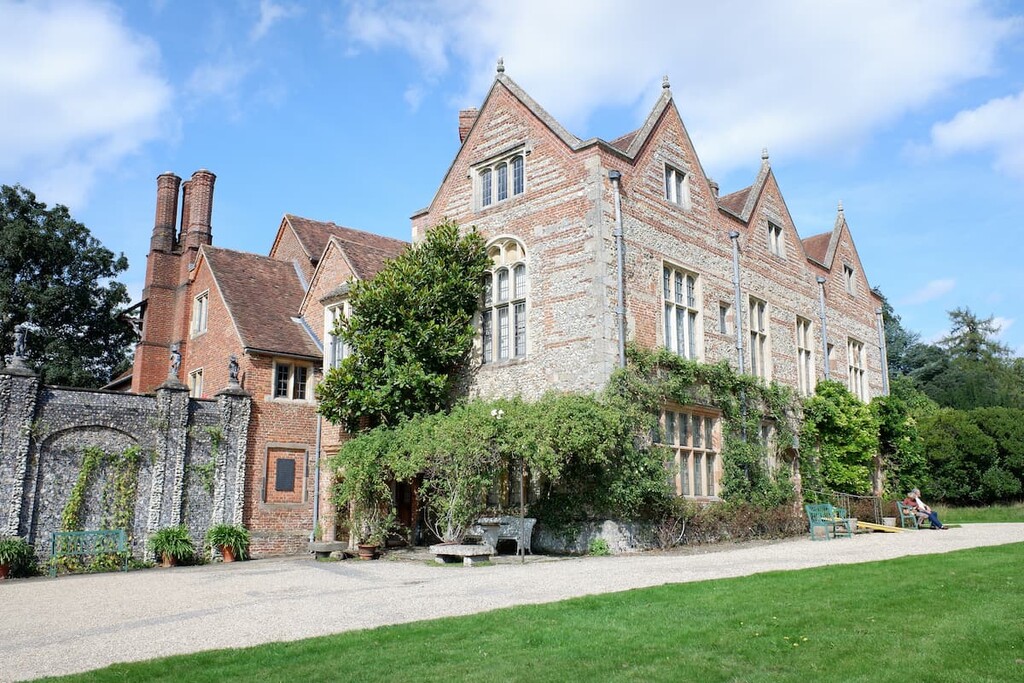
While the demand for firewood lessened in the nineteenth century, the local furniture industry was booming, especially around High Wycombe. The area's trees were mainly used to construct chairs, but this demand declined during the Victorian era when imported wood became more commonplace.
Today, the timber industry has all but abandoned the Chilterns due to the cheap cost of imported wood and the importance of the area's ecosystem. However, damage caused by fallow deer and grey squirrels, as well as climate change and little re-planting, threatens the future of these precious environments.
With relaxing walks through dense woodlands and over rolling hills, there are few better places for a family stroll than the Chiltern Hills AONB. Here's a look at some of the best hiking trails in the area.
One of two "Views from the Vale" hikes, Wendover Woods/Haddington Hill Walk is among the most popular trails in the Chiltern Hills. The majority of Haddington Hill (284 m/931 ft) is covered in the dense 800-acre (323 hectare) Wendover Woods.
While it's possible to park at the summit of Haddington Hill and take in views across the Vale of Aylesbury, it's much more satisfying to extend the hike through Wendover Woods.
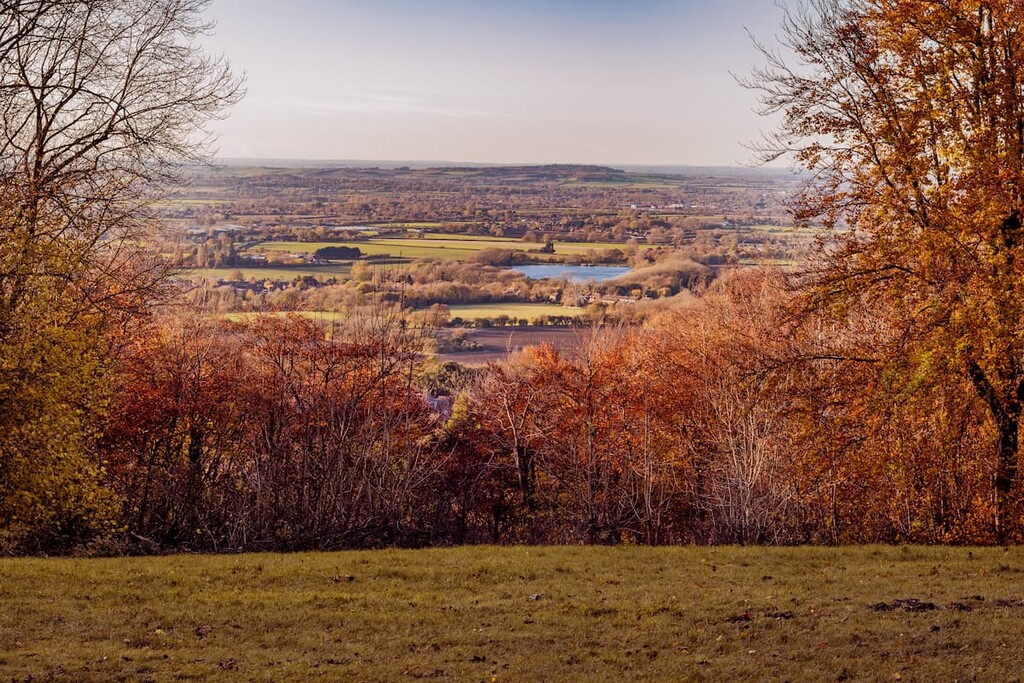
You can pick up this trail from the town of Wendover, located 5 miles south of Aylesbury in Buckinghamshire. Start the walk from Wendover train station. The route is well signposted, but it ventures uphill for around 2 miles (3 km), so suitable footwear is recommended.
The Wendover Woods/Haddington Hill Walk are manageable for hikers of a wide range of abilities. There's also an All Ability Trail from the Wendover Woods main car park that's accessible for people who use wheelchairs.
The Wendover Woods/Haddington Hill Walk is 7 miles (11.3 km) and takes three or four hours to complete. The trail leads through Wendover Woods along the waymarked Ridgeway National Trail. Wendover Woods is great for seeing the bluebells that coat the floors of local woodlands.
Atop Haddington Hill, you'll get to see the Boddington Hill Fort, an important archeological site dating back to the first century BCE. You can also take a short detour for better panoramas of the Vale of Aylesbury from the Boddington Bank viewpoint.
The shorter of the two "Views from the Vales" walks, the Coombe Hill Walk is another worthwhile trek if you're exploring the northern edge of the Chilterns. The walk takes you to the top of Coombe Hill (268 m/879 ft), which is famed for its vale views and its 1904 Boer War monument.
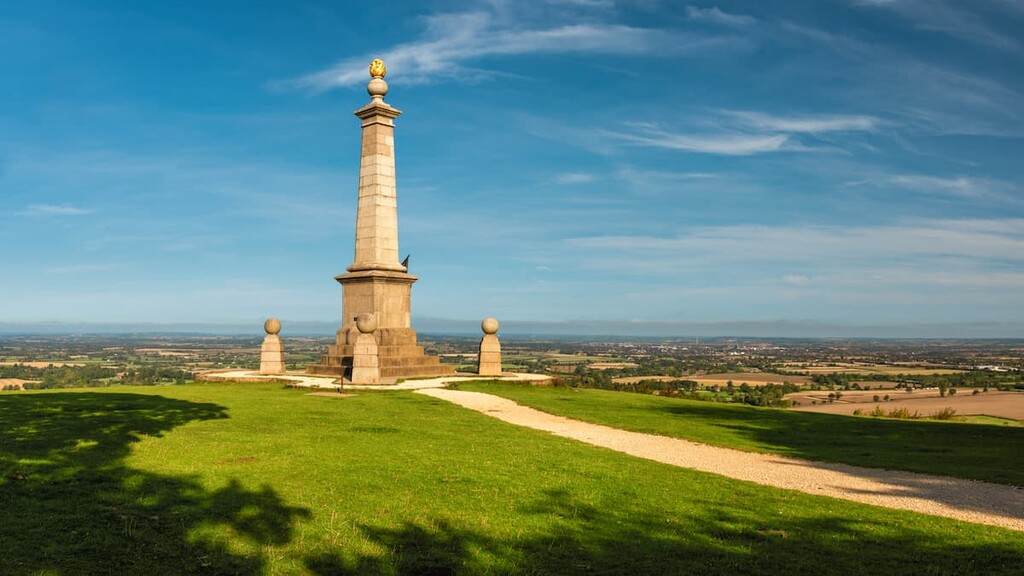
Along the walk, you'll also pass over Bacombe Hill (238 m/780 ft), an excellent spot for those looking to experience the Chilterns' chalk grasslands. As with the Wendover Woods walk, you pick up this trail from the Wendover train station.
The Coombe Hill Walk is 3 miles (4.8 km) long and takes approximately two hours to complete. The trail is easy to follow and climbs steadily uphill; however, the paths can be muddy, so bring hiking boots.
The majority of the walk follows a bridleway before merging with the Ridgeway National Trail. From atop Coombe Hill near the monument, you'll be treated to some of the best views across the Vale of Aylesbury. The Chequers, the Prime Minister's country estate, is also visible from the hill.
One of the most popular walks to the northeast of the park is a hike from the picturesque village of Whipsnade up Dunstable Downs (244 m/800 ft). Dunstable Downs is one of nearly 200 commons across the Chiltern Hills, each of which has its own unique history. It's also the county top of Bedfordshire.
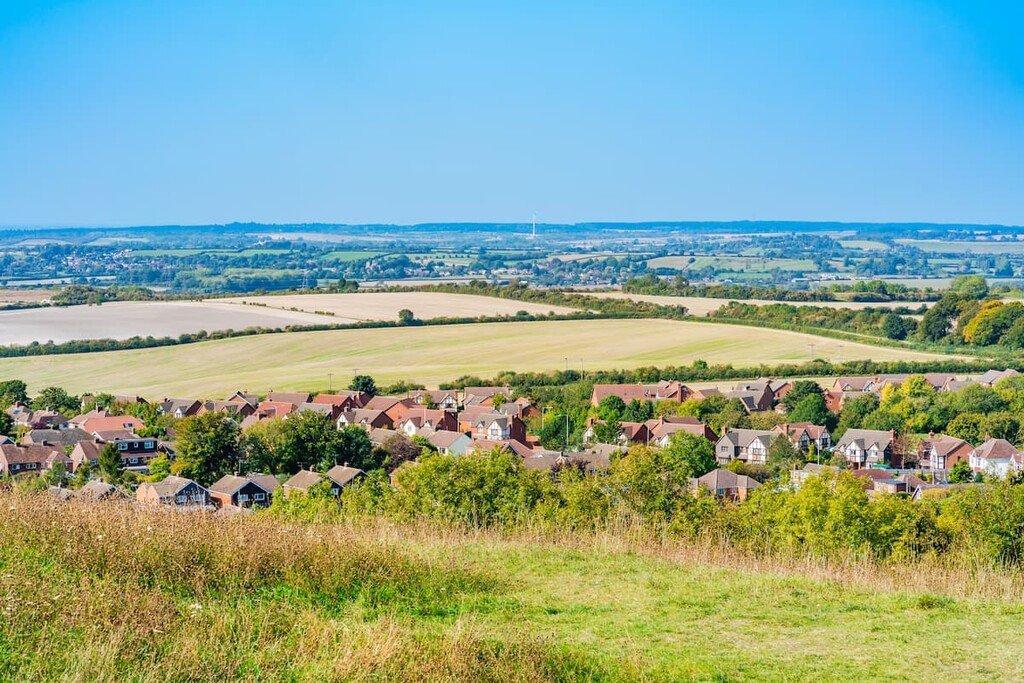
The walk starts from the car park in Whipsnade before leading gradually up Dunstable Downs with sweeping views of the Vale of Aylesbury. The route should be suitable for all hikers, and you can even take a pushchair from Dunstable Downs car park. The walk is four miles and takes two to three hours.
One of the highlights from this walk is Whipsnade's Tree Cathedral, where trees and bushes have been planted in the shape of a medieval cathedral. On this walk, it's also worth taking a slight detour to the Five Knolls, a series of burial mounds with skeletal remains dating to the fifth century CE.
You shouldn't miss out on exploring one of the few remaining areas of boxwoods during your visit to the Chiltern Hills AONB. These are the largest box woodlands in England, larger than those found on the famed Box Hill (192 m/629 ft) in Surrey.
There are a few steep sections and muddy pathways along this walk, so bring along a good pair of hiking boots. The walk is around 6 miles (9.7 km) long and takes approximately four hours. The trail can be split into two separate walks: a 3.5-mile (5.6 km) northern circular route from Great Kimble and the 3-mile (4.8 km) southern circular route starting from Pulpit Hill (267 m/875 ft).
![]()
Along this walk, you'll come across some beautiful nature, fascinating history, and a few of the highest points in the Chiltern Hills AONB. The northern circular route takes you over Beacon Hill (274 m/898 ft), the second-highest point in the AONB.
Near the summit of Pulpit Hill, there are the remains of a D-shaped hill fort, with mounds and ditches dating back over 2,000 years. While walking along the vale looking at the Chiltern escarpment, enjoy views of the series of valleys, like Ellesborough Warren, which are filled with box woodlands.
Fancy a stroll along one of the Chiltern Hills' unique chalk streams? The Chess Valley Walk takes hikers along the River Chess and is one of the most beautiful areas of the Chiltern Hills AONB. During this riverside walk, you'll get a chance to see some of the area's rarest wildlife, including water voles, kingfishers, and little egrets.
The Chess Valley Walk starts from the quaint tenth-century town of Rickmansworth and ends in Chesham. You can pick up the trail from the Rickmansworth train station. The majority of the walk follows the River Chess, passing several interesting landmarks, like the eighteenth-century Royal Masonic School and the Frogmore Meadows Nature Reserve.
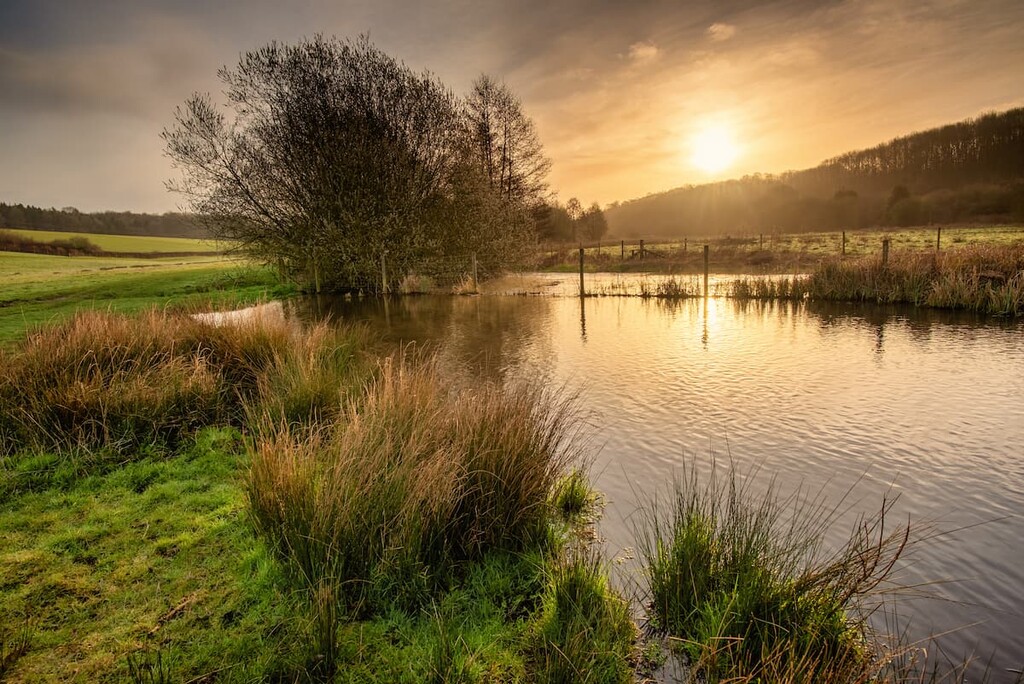
The walk is 10 miles (16 km) long and takes three or four hours. There are also several variations on the Chess Valley Walk if you fancy a different experience. Along the way, you can take detours across Chorley Commons to Chorleywood or to the village of Little Chalfont before rejoining the main path.
Hikers searching for the perfect long-distance trek across the hills of south-central England should check out the Ridgeway National Trail.
One of 16 National Trails in the UK, the Ridgeway starts at the World Heritage Site of Avebury and meanders for 87 miles (139 km) through the best of the North Wessex Downs AONB and the Chiltern Hills. The Ridgeway National Trail ends at Ivinghoe Beacon (233 m/764 ft).
![]()
While the full trail is 87 miles (139 km) long, you can pick up the Chiltern Hills leg of the journey from Streatley near the Goring Gap. The Chiltern Hills AONB section of the Ridgeway National Trail is approximately 44 miles (70 km) long, has an elevation change of around 1183 m (3881 ft), and takes three or four days.
While the Ridgeway is well-marked, walkers are advised to bring a guidebook or map due to the length of the trail. The route also follows bridleways and muddy paths, so bring a pair of good hiking boots. One of the best times to walk the Ridgeway National Trail is in May when the forests are carpeted in bluebells.
The first day of this route takes hikers on a 15-mile (24 km) walk from Streatley to Watlington. For the first few miles, you'll get to enjoy a stroll along the most famous waterway in Britain, the River Thames, passing through serene woodlands and beautiful villages like Nuffield.
The section from Watlington to Wendover is the most arduous day's walk on the Ridgeway. This 17-mile (27 km) stint passes over several small hills, including Lodge Hill (215 m/705 ft), as well as through the Aston Rowant National Nature Reserve. Atop the Chiltern Hills escarpment, you'll be treated to some of the best views of the Vale of Aylesbury.
The final day's walk is a 12-mile (19 km) trek from Wendover to the summit of Ivinghoe Beacon. This leg is the most heavily wooded section of the walk, with the majority of the route leading through dense beechwoods. The highlight of this section is the last few miles when you exit the woodlands onto Pitstone Hill (230 m/754 ft), with spectacular views towards Ivinghoe Beacon.
Searching for somewhere to stay in or around the Chiltern Hills AONB? Check some of the main towns and cities nearby.
Despite being one of the most remote areas of south-central England, the Chiltern Hills AONB is surprisingly close to England's capital city, London.

The Chiltern Hills are less than 40 miles (64 km) from London and are a popular destination for Londoners looking to escape the city for the day. The Chiltern Hills are also surprisingly easy to access, and there's a train line that runs from the city center.
During your stay in London, you'll also have the opportunity to visit some of England's world-famous landmarks, like the Tower of London, Buckingham Palace, and Big Ben. There are also dozens of high-class hotels and cheap accommodation options in London, so you won't be stuck looking for a room.
Famed for its university, Oxford is an iconic city from which to explore the Chiltern Hills AONB. Oxford is located just over 20 miles (32 km) to the northwest of the Chilterns, making it easy to reach on a day trip. Being located on the northern side of the Chilterns means it's within driving distance of the best hiking areas along the escarpment.
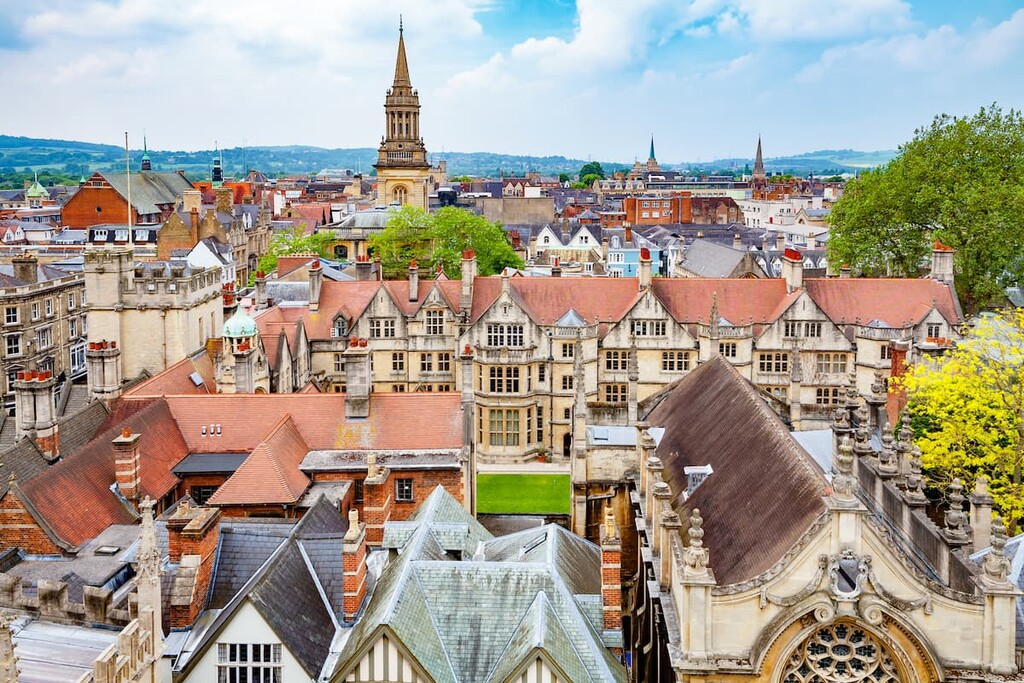
During your visit you'll undoubtedly want to take a tour of Oxford University, including famous areas like the Radcliffe Camera and the Bodleian Library. Established in the eleventh century, Oxford University is the oldest English-speaking university in the world. There's also no shortage of accommodation in Oxford, with hotels like Jurys Inn, Malmaison, and the George Street Hotel.
If you're looking to escape the city to a picturesque town with plenty of amenities, then consider staying in Aylesbury. The county town of Buckinghamshire, Aylesbury is only 4 miles (6.4 km) from the edge of the Chilterns, including hills like Haddington Hill (284 m/931 ft) and Coombe Hill (268 m/879 ft).
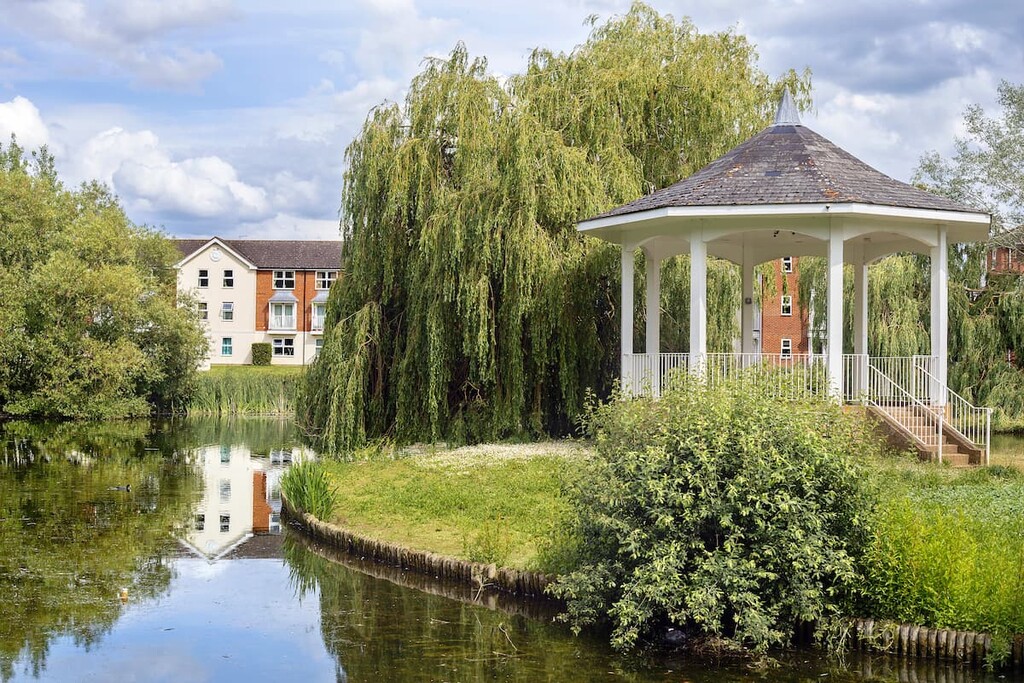
As well as being within close proximity to the Chilterns, there are also some interesting attractions in Aylesbury, like The Roald Dahl Children's Gallery and the nineteenth-century Waddesdon Manor. Popular hotels in Aylesbury include the West Lodge Hotel, the Broad Leys, and the Bell.
One of the largest settlements entirely within the Chiltern Hills AONB is High Wycombe. This market town is located in a valley in the River Wye and serves as an idyllic base from which to discover the Chilterns. High Wycombe also has a historic market, which is said to date back to the Middle Ages.
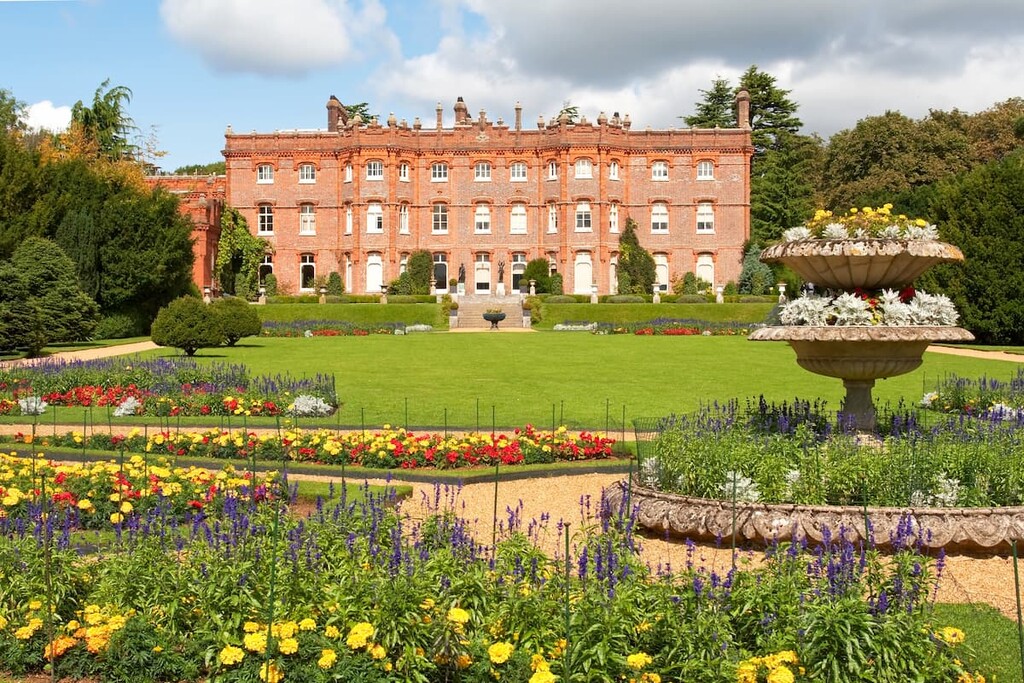
When you're not off hiking through the surrounding countryside, pay a visit to Benjamin Disraeli's Hughenden Manor and take a tour of the Hellfire Caves. If you plan to spend the night in High Wycombe, consider staying at the Wendover Arms Hotel or the Hampton.
Hikers who'd prefer to stay in one of the Chilterns’ many quaint market towns won't want to miss out on Wendover. Surrounded by charming hamlets and home to a medieval market, Wendover is a classic Chiltern town.
There are also few better places to stay if you want easy access to some of the best hills in the Chilterns, with Coombe Hill and Haddington Hill less than 5 miles (8 km) away. It's also a great place to rest along the Ridgeway National Trail. Accommodation options include camping at Hill Farm and the Bel and the Dragon at the Red Lion.
Another small town worth visiting during your Chiltern Hills adventure is Watlington. With a population of around 3,000 people, Watlington is an excellent spot for a quiet getaway and is a popular place to stop on the Ridgeway National Trail.
There are several other popular hills near Watlington, including Watlington Hill (231 m/758 ft), Pyrton Hill (251 m/823 ft), and Shirburn Hill (274 m/899 ft). During your stay, ensure you make a trip to the 850-year-old Stonor Park. Popular accommodation options in Watlington include the Fat Fox Inn and White Mark Glamping.
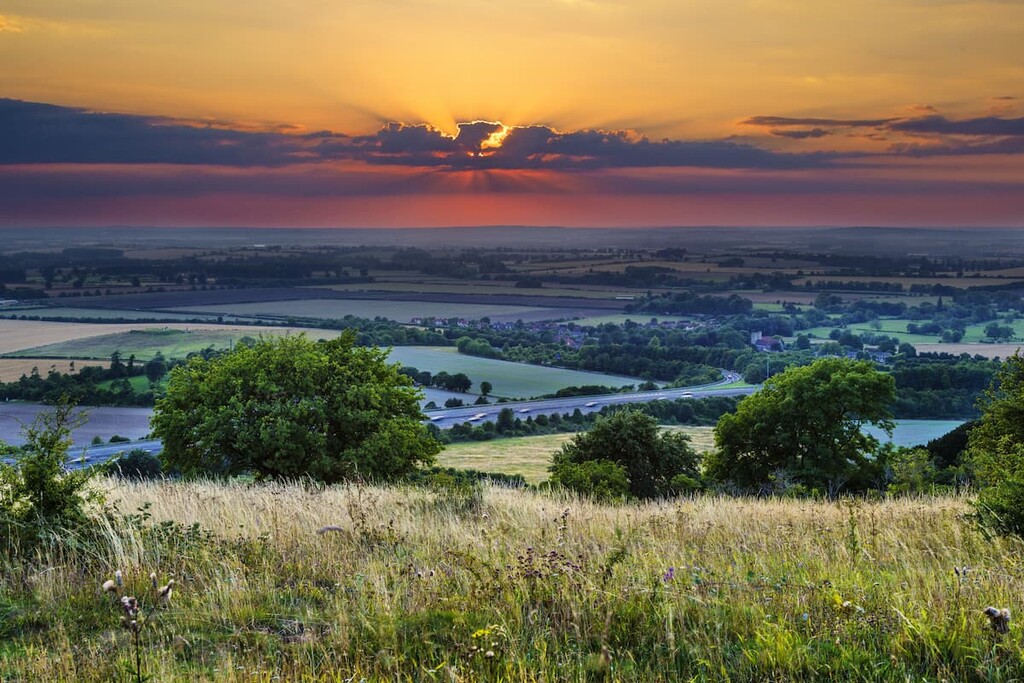
Explore Chiltern Hills AONB with the PeakVisor 3D Map and identify its summits.






